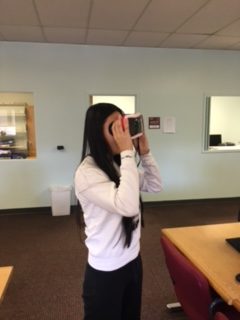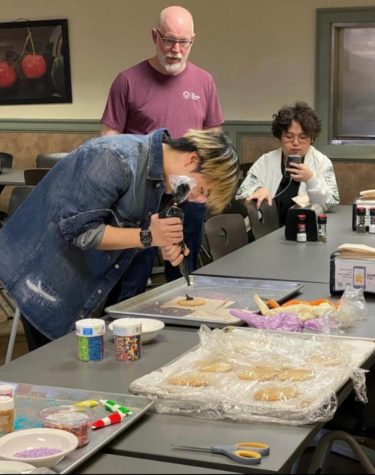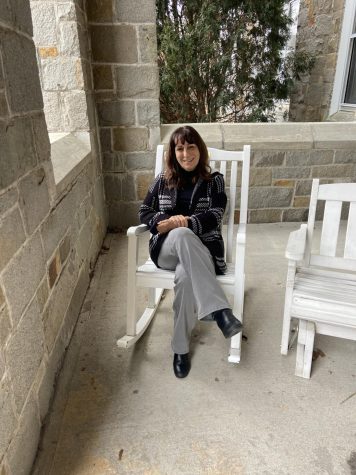Looking into the (Virtual) Future

Senior Camellia Liu poses with one of the I.T. Departnement’s virtual reality headset.
October 31, 2016
Not too far into the future, when you walk into a classroom, you could be seeing students with virtual reality, or VR, monitors strapped to their heads like goggles, watching videos that will help them visualize concepts in their classes. This project is still very much in its idea phase, but Head of School Steve Griffin is hoping that MacDuffie can pioneer the movement of virtual reality in education.
Griffin sees MacDuffie as a lab where students and teachers can test this new technology, and this will also support teachers who would want to work and develop virtual reality for education. Director of Information and Technology Ed Gray is interested in buying a VR camera, which would allow our community to film videos that could be applied to our curriculum.
Griffin makes the point that “If you could build a virtual reality science lab, it could become a great equalizer. No longer would you need to be the school that owns the proton accelerator.” Essentially, if educators could develop curriculum for virtual reality viewers, than it would make education more accessible, because schools would only have to invest in the VR viewers and curriculum (some of which is free on Youtube) instead of pristine chemistry labs and other expensive equipment.
If MacDuffie is able to develop a curriculum with VR, then it could be shared with our sister schools in China, and students from MacDuffie might even be able to communicate with students from other schools through virtual reality, in a similar way as Facetime and Skype are used now.
There has already been some progress made by Gray in the search for a curriculum. There is a site called Nearpod that specializes in making interactive virtual reality slideshows for all different ages and subjects. A teacher will have control of the presentation on their computer, while students will be able to use their phones to view 360 degree photos and then take quizzes at the end of the presentation.
It should be noted that if one is sensitive to motion sickness, they might feel slightly ill after watching a VR video.
Youtube and Google have already started making virtual reality more accessible, as some machines can cost over $1,600. Google has partnered with Mattel to make a plastic virtual reality headset that can hold any smartphone. Youtube has created many free videos that can be used with or without the headset, and vary from a British natural history museum come to life to a psychadelic music video of Queen’s Bohemian Rhapsody.
Head of STEM Department Tina Hamel has also supplied some ideas for the chemistry and biology curriculum. She says that UMASS is using virtual reality to test certain hypotheses to see how they will react. When asked if she thought that education in a virtual world would take away from education in the physical world, she said “I think if people start realizing that ‘I can go to virtual reality, why would I go to school?’… It concerns me a little bit, only because I know what technology has already done.”
She explains that students do not pay attention in classes already because of the distractions of phones and laptops, and the accessibility of technology has caused cuts in school funding and teacher salaries in public schools. So if MacDuffie plans on being the pioneer of virtual reality in private school education, steps need to be taken to ensure that the physical reality of education is not taken away.






